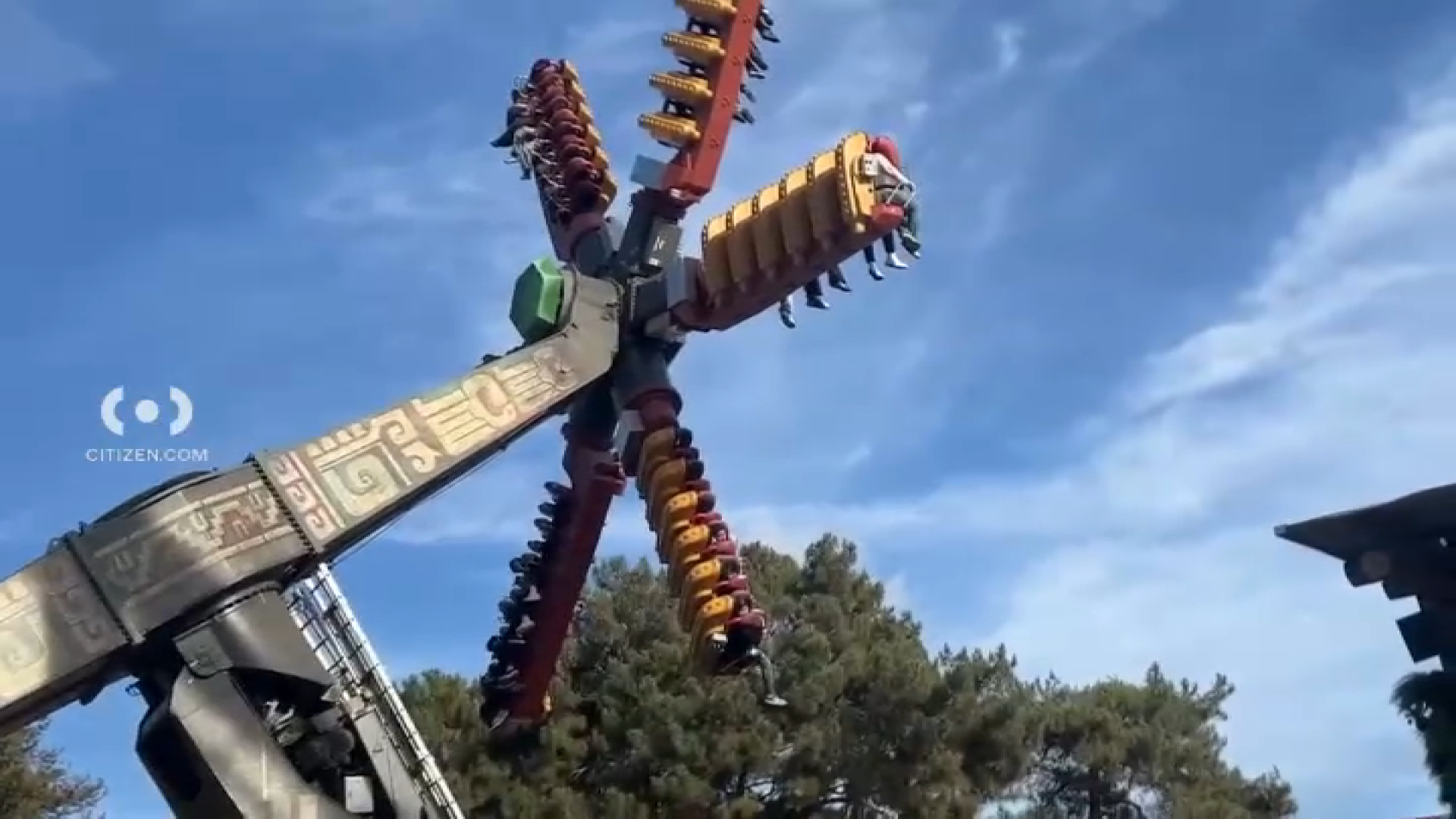Officer James Zboravan lay facedown on the floor of a dentist's office as the overwhelmed doctor frantically improvised ways to stem the bleeding from wounds left in his body by armor-piercing bullets.
Outside the office building, on the morning of Feb. 28, 1997, the world watched the LAPD engaged in one of the most notorious shootouts in the city's history.
What led the rookie cop to that pivotal moment that day started out as a call of a possible bank robbery in progress. And he and his training officer partner Stuart Guy had been among the first officers to respond.
For Zboravan, then 26 and just months out of the Los Angeles Police Academy, it was an adrenaline-inducing call.
But it took a darker turn when another call came out -- "Officer needs help, shots fired at the Bank of America on Laurel Canyon."
Guy told Zboravan to grab the shotgun and the officers raced "code three" -- lights and sirens -- to the bank.
While in route, Zboravan imagined two scenarios. Either the robbers will give up or they'll run back into the bank, the SWAT team will be called and the negotiation process will begin.
"Little did I know that wasn't the suspects' plan," he said.
Within minutes, the officers arrived at a strip mall parking lot on Laurel Canyon across the street from the Bank of America.
Other than the police radio transmissions, all was quiet.
There was no traffic. The street had been blocked off. Shoppers milled around as police arrived with their guns drawn. Cops ordered them to get in a car and leave or go back in a store.
Within a couple minutes, one of the robbers, Larry Phillips, emerged from the bank dressed in black, wearing a ski mask and holding an assault rifle.
He raised his gun and fired an automatic burst. Sgt. Dean Haynes and three civilians were hit.
From behind a parking lot kiosk, Zboravan fired two bursts of buckshot from his shotgun at Phillips from across the street, about 100 feet away.
Eight pellets struck Phillips, seven lodged into his body armor, one pellet deflected off the armor and struck him in the tailbone.
Phillips flinched, spun around, locked on and unleashed a hail of automatic rifle fire.
Zboravan crawled onto two plainclothes detectives, William Krulac and Tracey Angeles, to shield them from the gunfire.
Then Zboravan got hit.
One bullet cut a gash into his lower back. Another round pierced his hip and exited through his buttocks. His flashlight stopped a third bullet near his hip bone. A fourth round clipped his handcuffs.
The pain felt like fire.
News
Top news of the day
Then the shooting stopped. The lull gave Zboravan and his colleagues time to find better cover, deeper in the parking lot.
They went from car to car, trying to find cover as bullets kicked up shrapnel, peppering them with glass and asphalt.
Krulac was struck in the foot, knocking him to the ground.
Crouched like baseball catchers, he and Zboravan sprinted for the building, ignoring the pain.
As bullets continued to fly, the officers jumped through the glass door of a dentist's office and ran upstairs.
"Is the doctor in? Is the doctor in?"
Dr. Jorge Montes opened the door and began assessing Zboravan's wounds. Glass and blood were everywhere. The wound in the officer's back was so deep that Montes said his finger sunk into a cavity that houses the lungs.
The dentist prayed, "Please don't let him die here."
Then he had an idea. He'd use Oxyfresh dental gel, used for dental extractions, to stop the bleeding.
Montes decided not to remove shrapnel from Krulac's leg. If he had he feared the detective would have bled out since the bone marrow doesn't coagulate, a decision that turned out to be the right one.
Outside the dentist's office, Guy and Angeles were pinned down.
Bullets struck Guy in the leg and arm.
Gripping the belt he used as a tourniquet in one hand and clutching his pistol in the other, Guy, a former U.S. Army medic and Desert Storm veteran, feared the gunmen would chase him down and execute him.
So he made a pact with God.
"If you save me, I promise to serve you."
After 20 minutes, a squad car pulled up and carried him and Angeles to awaiting ambulances. The same unit returned and picked up Zboravan and Krulac.
The shootout lasted 44 minutes.
Zboravan was among 11 officers wounded in the gun battle. Seven bystanders were wounded. Phillips and the second gunman, Emil Matasareanu, were the only two people who died.
Today, Zboravan, a sergeant who works at the Northeast Division, still has pain. But he remains a committed cop. It's all he's ever wanted to do.
He finds it therapeutic to talk to other cops every couple of months at training sessions around Southern California about the will to survive.
He credits his survival to Montes, Krulac and Richard Householder, another LAPD officer who was not there that day but who talked about the will to survive at the police academy months earlier.
Months after the North Hollywood shootout, Zboravan met Householder, who happened to be working at the same station in North Hollywood. Zboravan told him that his talk at the academy saved his life.
Householder told him there was a reason why he had gone to the academy every couple of months for 20 years.
"'I did this in the hopes of saving an officer's life one day,'" Zboravan remembers Householder telling him.
"And I was the one."
Guy eventually recovered and didn't return to the LAPD. He followed through on his promise, went to seminary school and became a priest in his home country of Panama.
In a phone interview, the Purple Heart recipient said he draws on his experience to teach his flock about the will to survive.



